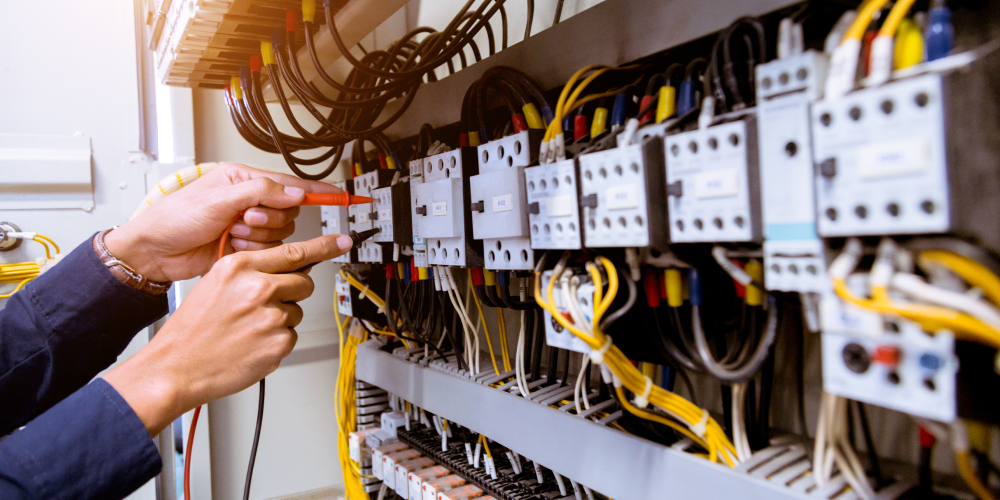
Gable vents are located on the roof of your home at the top. They passively vent the area beneath and around your gutters. They work in the same way as two open windows, allowing fresh air to enter and pushing out stale, keeping your attic cool and dry.
There are many options for adding ventilation to your attic. A qualified roofing professional is qualified to assess your attic's requirements and find the best solution.
Gable Vents, Side of House
The gable vents you see at the end of your sloping roof are typically located on either side, as close to the peak of the gable as possible. They are usually painted to match the siding.
Do I need soffit vents that are paired with gable ventilats?
The soffit vents are located under your roof overhang and are also known as the soffit. They are ideal for being lower than the exhaust vents on the ridge or gable. This allows the soffit and exhaust vents to draw in cooler air to the attic while also allowing for moist warm air to be expelled from the attic.

Your roofer will measure how much space your attic floor has and compare that to the area without vents. He will then calculate the number of vents needed to meet your attic ventilation needs.
Ratings of attic vents depend on the net free area. This refers to how much air is allowed to flow through them. This helps you determine how much ventilation you'll need and make sure you don't over-ventilate your attic.
You can improve ventilation by cleaning out dirt, insulation, or other debris from your attic. Eliminating these items will increase the airflow through your attic. This will reduce your energy costs, and help prevent mold and mildew growth.
The best way to vent your attic is to install a system that uses natural and supplementary ventilation, such as fans. When it gets too hot to allow natural ventilation, fans can remove the hot air from your attic.
Whirlybirds, or turbines, pull air from the attic via wind currents. They are a quick and cheap alternative to more expensive venting options. However these vents can be susceptible to the wind's power fluctuations and can prove to be less efficient.

Power venting systems can be a more sophisticated way to ventilate your attic. This involves using a fan to blow out the air. While they are more effective than gable vents, they can be expensive and need frequent maintenance.
The best way for venting your attic is to use a combination or soffit and ridge vents. You want to position the soffit ventilations as low and as cool as possible so that cooler air is drawn in, and the ridge ventes as high and as dry as possible so that warm, moist air can be expelled from your attic. When choosing the vents for your house, you should consider the size of the attic, the climate and the style of the house.
FAQ
Who is responsible for paying for the service
Your SCA will indicate who is responsible in paying for the service. You may be able to file a claim for compensation against the court if the service provider fails to pay in full.
Do I have to sign anything prior to starting work?
Yes, your SCA must be signed by both parties. This means that neither party may change their mind after the agreement is signed.
Who provides a Service Agreement?
Service agreements between you and your customers define how you will deliver services to them. It describes the customer's responsibilities as well as what you can do for them and when they must pay you.
Additionally, the service agreement confirms whether additional fees will apply to extra services.
A service agreement should cover all terms and conditions. This includes payment methods and delivery times.
You can use this template to cover every aspect of the agreement.
Are there additional considerations I need to make?
Yes. Check your local laws to see what types of projects are allowed and what conditions must be met. Some states require that you get council approval before you build. Some states only require you to notify them about your plans. To find out their position on the matter, check with your local authorities.
Statistics
- (d) Contractor disputes related to compliance with its obligation shall be handled according to the rules, regulations, and relevant orders of the Secretary of Labor (see 41 CFR60-1.1). (acquisition.gov)
- While we offer all our high-quality services at competitive prices, we know that many who need our services are on fixed incomes, so we offer a 10 percent discount for seniors and military members. (homeservicecontractorsinc.com)
- Depending on the client's trustworthiness and financial stability, a deposit is usually 10 to 50% of the total contract amount. (lawdepot.com)
- Reasonable late fees go up to 25% per year on unpaid sums. (lawdepot.com)
- (3) The contracting officer may provide for a contract price adjustment based solely on a percentage rate determined by the contracting officer using a published economic indicator incorporated into the solicitation and resulting contract. (acquisition.gov)
External Links
How To
How can I start to negotiate my first service contract?
Negotiating terms for a first service contract can seem daunting.
Negotiating the terms of a contract is not difficult.
It all depends upon how prepared you're.
Before you start negotiations, make sure you fully understand the terms of your first service contract.
You should, for example, know exactly what you will do to the customer.
You should also know what your customer wants from you.
Once you have a clear idea of what you will provide, you can start preparing for negotiation.
The more information that you have, the more prepared you'll be for the meeting with the other party.